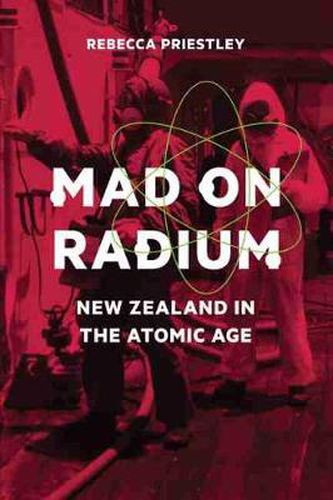Readings Newsletter
Become a Readings Member to make your shopping experience even easier.
Sign in or sign up for free!
You’re not far away from qualifying for FREE standard shipping within Australia
You’ve qualified for FREE standard shipping within Australia
The cart is loading…






In this engaging history, prize-winning author Rebecca Priestley reveals the alternative history of ‘nuclear New Zealand’ - a country where there was much enthusiasm for nuclear science and technology, from the first users of x-rays and radium in medicine; the young Kiwi physicists seconded to the Manhattan Project; support for British bomb tests in the Pacific; plans for a heavy water plant and a nuclear power station; prospecting for uranium on the West Coast of the South Island; and thousands of scientists and medical professionals working with nuclear technology. She then considers the dramatic transition to the proudly ‘nuclear-free New Zealand’ policy in the 1980s. In the late 1970s, less than a decade before, the country had been considering nuclear power to meet growing electricity demand. Following the nuclear-free policy, anything with nuclear associations came under suspicion: taxi drivers referred to a science institute using a particle accelerator as ‘the bomb factory’ and entertainer Jools Topp refused radiation therapy for cancer, telling the doctors I’m a lifelong member of Greenpeace, why would I let you irradiate me?
By uncovering this long and rich history of engagement with the nuclear world and the roots of New Zealand’s nuclear-free identity, by leading her readers into popular culture, politics, medicine and science, Priestley reveals much about a culture’s evolving attitudes to science and technology and the world beyond its shores.
$9.00 standard shipping within Australia
FREE standard shipping within Australia for orders over $100.00
Express & International shipping calculated at checkout
In this engaging history, prize-winning author Rebecca Priestley reveals the alternative history of ‘nuclear New Zealand’ - a country where there was much enthusiasm for nuclear science and technology, from the first users of x-rays and radium in medicine; the young Kiwi physicists seconded to the Manhattan Project; support for British bomb tests in the Pacific; plans for a heavy water plant and a nuclear power station; prospecting for uranium on the West Coast of the South Island; and thousands of scientists and medical professionals working with nuclear technology. She then considers the dramatic transition to the proudly ‘nuclear-free New Zealand’ policy in the 1980s. In the late 1970s, less than a decade before, the country had been considering nuclear power to meet growing electricity demand. Following the nuclear-free policy, anything with nuclear associations came under suspicion: taxi drivers referred to a science institute using a particle accelerator as ‘the bomb factory’ and entertainer Jools Topp refused radiation therapy for cancer, telling the doctors I’m a lifelong member of Greenpeace, why would I let you irradiate me?
By uncovering this long and rich history of engagement with the nuclear world and the roots of New Zealand’s nuclear-free identity, by leading her readers into popular culture, politics, medicine and science, Priestley reveals much about a culture’s evolving attitudes to science and technology and the world beyond its shores.